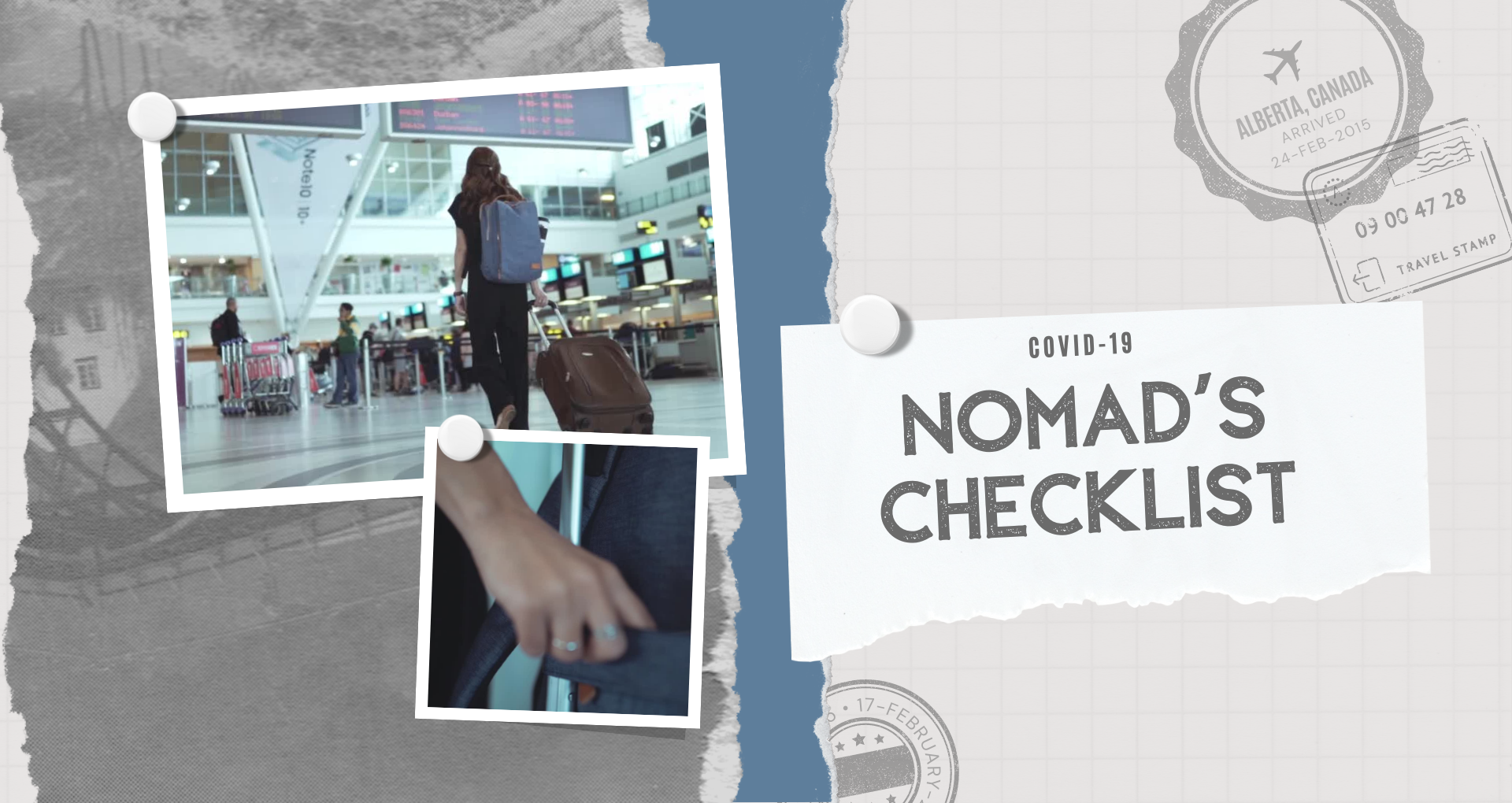Long lines of passengers, people being stopped for not following SOPs, looking for your vaccination cards. These are all things you’ll witness if you travel mid-pandemic or post-pandemic. The new normal has frustrated a lot of us, especially avid travelers. Not because half the world was closed up, but because things that were simple before now have about a 7 step procedure that you have to follow.
Whether you’re going back home, visiting an international destination, or even attending a business trip, there are new restrictions and obligations every traveler has to meet. No need to worry though, here’s the ultimate guide to traveling in the COVID world.
1. Hygiene essentials
Before you even enter the airport, you need to make sure you’re geared up with the essential equipment for the journey. Your clothes and travel documents are essential. But you can’t forget all your hygiene essentials, especially in this environment. Bring along your sanitizer because we’re all aware of how disgusting airplane tables and handles can be. This should be essential, pandemic or not. Besides, you might not have access to water and soap all the time. The US allows up to 12 ounces or 400 ml of sanitizer. As for other liquids and gels, the limit is 100 ml only. Pack accordingly so they don’t make you dump out all the fancy sanitizer. Moreover, packing some antiseptic wipes, an extra pack of masks, disposable gloves, and a small travel kit might do you good, too.
2. Travel documents
Traveling prior to the pandemic only requires a few documents, your visa, passport, and a flight ticket. However, you’ll need to update this list of documents now. Many countries are issuing new visas and passports, so it’s better to check your countries’ regulations updated rules. The rules of who can travel might be different. Some countries require a negative RT-PCR test, which is no older than 72 hours. As for passengers from India, they must carry a 96-hour prior RT-PCR test if they don’t want to be stuck in a minority institutional quarantine. When it comes to digital nomads, print out your documents, because soft-copies don’t always work!
One thing you absolutely cannot forget is your vaccination card! Make sure to keep it laminated and on hand at all times. Additionally, get travel insurance for yourself because many countries don’t cover any sort of expense that occurs abroad. And in any unfortunate cases you might need medical attention, it’s better to sign up for travel insurance for international healthcare. In fact, some countries like UAE, Costa Rica, and Tahiti have made it mandatory that a tourist’s travel insurance covers COVID too.
3. Accommodation requirements
Each country has been dealing with this pandemic differently. Some have a nominal positivity rate, where others are still struggling to keep people socially distant. That’s why restrictions change when it comes to accommodation every so often. Before you make any bookings, try to look for options that offer some flexibility. Also, make sure that you read your destination country’s entry rules. Some might require a mandatory quarantine, so you might have to adjust your hotel or other Airbnb bookings.
The people that benefit the most in this pandemic are digital nomads and freelancers that work remotely. However, being digital nomads requires wifi, so before you choose an accommodation, double-check for its wifi resources.
4. Check Travel Restrictions
Even if the place you’re going to doesn’t require a negative COVID test, it’s still better to be on the safe side than to be forced to back with three bags full of masks and brand new outfits. It’s ideal for getting a covid-19 test before leaving since that’s just common courtesy at this point. And since, not all cases are symptomatic. There’s no need to skip this step. During your stay, make sure to keep the negative status updated even if you’re vaccinated. This menace of a virus mutates very fast, and if you catch a new variant, someone should instead inform you about it.
You can’t just not eat during your journey and, besides, not everyone can cook at home. This will require you to research restraint timings and other lockdowns if they’re relevant to your destination depending on where you fly, choose shops, restaurants, and such establishments with a high sanitization level. Many establishments don’t offer indoor dining, and the ones that do, need proof of your vaccination cards. That’s why ring up your first eatery choices and ask them about these details. As for digital nomads, you might want to check whether public libraries are open or not beforehand.
5. Download Helpful Coronavirus-Related Apps
We know, we know. Everything is so messy. Even processes that took about a few minutes now take ten steps to complete. That’s why the public had to keep up, and they came through! The creation of COVID-related app has now boomed. The CDC, and FEMA have paired up to create apps that give people the best of all resources, and information that is reliable in a situation like ours. Many places have developed their tracing apps, such as NHS- COVID 19, which is the official contact tracing app for England and Wales. It informs you when you’ve been near other app users who tested positive for the virus. It also lets you know the current status of the virus in the postcode district.
It’s not just Britain that has its own contact tracing app. Countries like Australia, Bangladesh, Brazil, Canada, China, Columbia, France, Greece, India, Ireland and so many more! You just have to check if your destination country has an app!
If you’re going to travel, you cannot leave the country by checking out the IATA Travel Centre. It’s not an app, but it’s a website that has a compilation of all the current COVID restrictions in every country around the world! The best part is that it updates regularly.
Additionally, Check and Fly have released an app that can help passengers directly communicates with airports and their current health and safety measures. But if you want an app that can help you with trip planning overall, then App in the Air will help you immensely.
Conclusion
Even though this is the end of the guide, you might have to face some situation-specific issues. However, if you have the proper documents and take enough precautions, you should be good. Other than that, make sure you’re not on the side of the pandemic that’s spreading it more. If you’re not vaccinated, stay at home if your journey isn’t necessary, and that’s coming from the CDC! Mask up and stay safe!



